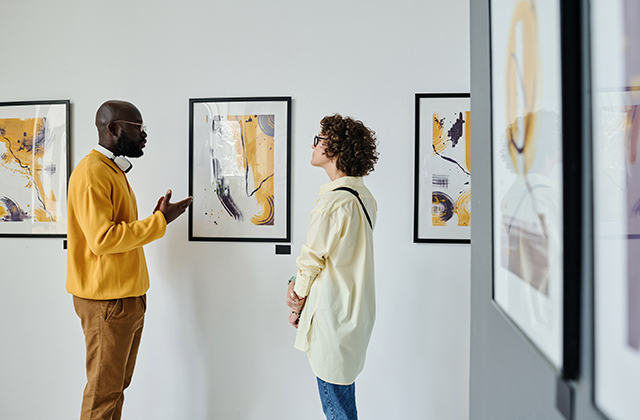In the competitive world of digital marketing, search engine optimization (SEO) remains a critical strategy for businesses aiming to improve their online visibility and drive organic traffic. Whether you’re a small business or a large corporation, having the right SEO expertise is essential. The question that often arises is whether to hire an in-house SEO consultant or to opt for the flexibility of a freelance SEO specialist. Each option comes with its own set of advantages and challenges. This article delves into the nuances of both choices to help you make an informed decision.
Understanding SEO Roles
SEO Consultant: An SEO consultant typically works as part of a broader digital marketing team within a company. They are responsible for developing and implementing comprehensive SEO strategies that align with the company’s overall marketing goals. Their role includes conducting site audits, keyword research, content optimization, link-building strategies, and performance analysis.
Freelance SEO Specialist: A freelance SEO specialist operates independently, offering their services to various clients on a project or contract basis. They provide similar services as an in-house consultant but are often more flexible in terms of availability and pricing. Freelancers can bring diverse experience from working with different industries and business models.
Advantages of Hiring an In-House SEO Consultant
1. Deep Understanding of Company Goals and Culture: An in-house SEO consultant has the advantage of being deeply integrated into the company’s culture and operations. They have a clear understanding of the company’s long-term goals, products, services, and market positioning. This alignment allows them to create SEO strategies that are more closely tailored to the company’s specific needs.
2. Consistency and Accountability: Having an SEO consultant as a permanent member of the team ensures consistency in the implementation of SEO strategies. They are readily available to address issues, make adjustments, and provide continuous optimization without the disruptions that can occur with freelancers who may juggle multiple clients.
3. Collaboration and Communication: In-house consultants benefit from regular interaction with other departments such as marketing, sales, and product development. This collaboration can lead to more cohesive and integrated marketing strategies. Being part of daily meetings and discussions ensures that SEO efforts are aligned with other marketing initiatives.
4. Long-Term Strategy Development: SEO is a long-term strategy that requires ongoing effort and adaptation. An in-house consultant can focus on building and refining strategies over time, ensuring that the company remains competitive in the ever-changing digital landscape.
Advantages of Hiring a Freelance SEO Specialist
1. Cost-Effectiveness: One of the primary advantages of hiring a freelance SEO specialist is cost savings. Freelancers typically charge by the hour or project, which can be more affordable for small businesses or startups that may not have the budget for a full-time SEO consultant. This flexibility allows businesses to scale their SEO efforts according to their budget.
2. Diverse Experience: Freelance SEO specialists often have experience working with a variety of clients across different industries. This diverse experience can bring fresh perspectives and innovative strategies to your business. They are usually well-versed in the latest SEO trends and techniques, providing valuable insights that might not be available in-house.
3. Flexibility and Scalability: Freelancers offer a high degree of flexibility. You can hire them for specific projects or on a short-term basis, making it easy to scale your SEO efforts up or down as needed. This flexibility is particularly beneficial for businesses with fluctuating workloads or seasonal demands.
4. Specialized Skills: Many freelance SEO specialists focus on specific areas of SEO, such as technical SEO, content optimization, or link building. If your business needs expertise in a particular area, hiring a specialist can provide targeted solutions that an in-house consultant may not be able to offer.
Challenges of Each Option
In-House SEO Consultant:
- Higher Costs: Employing a full-time SEO consultant comes with higher costs, including salary, benefits, and training expenses.
- Limited Exposure: In-house consultants may have limited exposure to different industries and SEO challenges, potentially leading to a narrower skill set.
- Resource Constraints: Smaller businesses may struggle to justify the cost of a full-time SEO consultant, especially if their SEO needs fluctuate.
Freelance SEO Specialist:
- Less Availability: Freelancers may not always be available when needed, especially if they are juggling multiple clients.
- Less Integration: Being external to the company, freelancers may not fully understand the company culture or long-term goals, leading to less integrated strategies.
- Quality Variability: The quality of freelance work can vary significantly, making it crucial to thoroughly vet potential candidates.
Making the Decision
When deciding between an in-house SEO consultant and a freelance SEO specialist, consider the following factors:
1. Budget: Evaluate your budget to determine what you can afford. If you have the financial resources, an in-house consultant can provide consistent and integrated SEO efforts. However, if budget constraints are a concern, a freelance specialist can offer more cost-effective solutions.
2. Business Size and Needs: Larger businesses with extensive SEO needs may benefit more from an in-house consultant who can dedicate their full attention to the company. Smaller businesses or those with less frequent SEO requirements might find a freelance specialist more suitable.
3. Long-Term vs. Short-Term Goals: Consider whether you need long-term, continuous SEO support or short-term, project-based assistance. In-house consultants are ideal for long-term strategies, while freelancers are better suited for short-term projects.
4. Expertise and Skills: Assess the specific skills and expertise you need. If you require specialized knowledge in a particular area of SEO, a freelance specialist might be the best choice. For broader, ongoing SEO efforts, an in-house consultant can provide comprehensive support.
5. Company Culture: Think about how well an external freelancer can integrate with your company culture and collaborate with your team. In-house consultants will naturally have a better understanding of your company’s ethos and can work more seamlessly with other departments.
Conclusion
Choosing between an in-house SEO consultant and a freelance SEO specialist depends on your business’s unique needs, budget, and goals. Both options offer valuable benefits and come with their own set of challenges. By carefully considering the factors outlined in this article, you can make an informed decision that best supports your search engine optimization consultants and helps you achieve your digital marketing objectives.
In summary, in-house SEO consultants provide consistency, deep integration, and long-term strategy development, making them ideal for larger businesses with ongoing SEO needs. On the other hand, freelance SEO specialists offer flexibility, cost-effectiveness, and diverse experience, making them a great choice for smaller businesses or those with specific, short-term SEO projects. Whichever option you choose, ensuring that you have the right SEO expertise is crucial for improving your online presence and driving organic traffic to your website. Discover here the long-term goal of your agency to your business.




